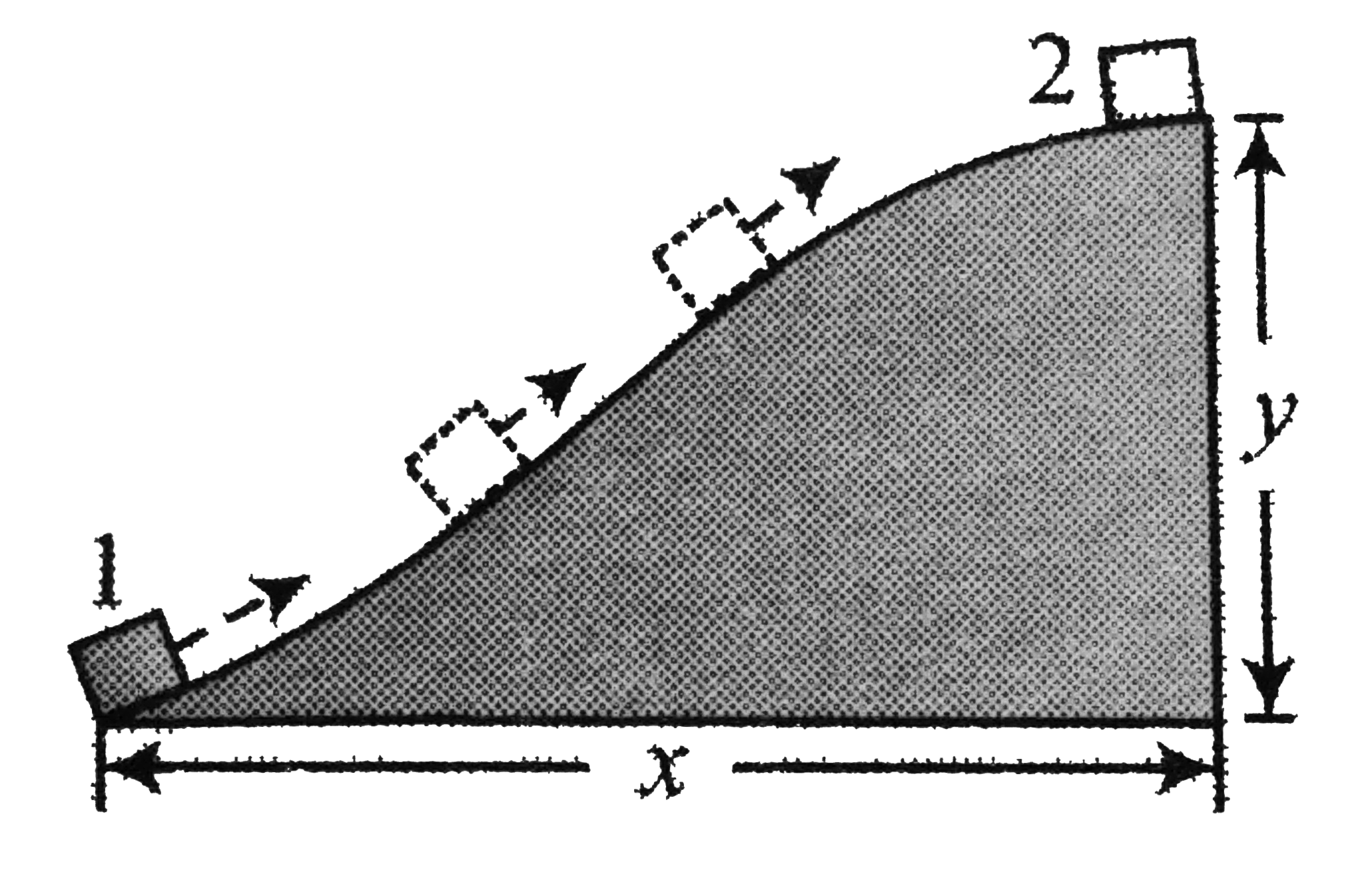A block of mass M is kept on as rough horizontal surface. The coefficient of static friction between the block and the surface is μ. The block is to be pulled by applying a force to it. What minimum force is needed to slide the block? In which direction should this force act?
θ=tan−1(μ)
θ=cos−1(μ)
θ=sin−1(μ)
θ=cot−1(μ)
The correct Answer is:A

For vertical equillibrium
R+F sinθ=Mg
∴ R=Mg−Fsinθ
and for horizontal motion
F cosθ≥ Force of friction
≥μR
≥μ(Mg−Fsinθ)
∴ Fcosθ≥μMg−μFsinθ
∴ Fcosθ+μFsinθ>μMg
∴ F≥μMgcosθ+μsinθ
For F to be minimum, cosθ+μsinθ should be maximum
For this, ddthη[cosθ+μsinθ]=0
∴−sinθ+μcosθ=0
∴ μcosθ=sinθ or μ=tanθ or θ=tan−1(μ)
Topper's Solved these Questions
- BOOK - MARVEL PUBLICATIONCHAPTER - FRICTIONAL IN SOLIDS AND LIQUIDS EXERCISE - TEST YOUR GRASP10videos
FRICTIONAL IN SOLIDS AND LIQUIDS
- BOOK - MARVEL PUBLICATIONCHAPTER - FORCE, WORK AND TORQUEEXERCISE - TEST YOUR GRASP10videos
FORCE, WORK AND TORQUE
- BOOK - MARVEL PUBLICATIONCHAPTER - MAGNETIC EFFECT OF ELECTRIC CURRENT EXERCISE - TEST YOUR GRASP10videos
MAGNETIC EFFECT OF ELECTRIC CURRENT
Similar Questions
A block of mass 1 kg lies on a horizontal surface in a truck. The coefficient of static friction between the block and the surface is 0.6. If the acceleration of the truck is 5m/s2, the frictional force acting on the block is…………newtons.
View SolutionA block of mass m is slowly pulled along a curved surface from position 1 and 2. If the coefficient of kinetic friction between the block and surface is μ, find the work done by the applied force.
 View Solution
View Solution
Knowledge Check
- Question 1 - Select One
A block of mass M is using on a rough horizontal surface. μR is the coefficient of kinetic friction between the block and the surface. What is the net force exerted by the surface on the block?
AMgBμMgCMg√1+μ2KDMg√1−μ2K - Question 2 - Select One
A block of mass 70 kg is kept on a rough horizontal surface and coefficient of static friction between block and surface is 0.4 . A man is trying to pull the block by applying a horizontal force .The net contact force exerted by the surface on the block is F , then:
AF must be 700 NBF must be 280 NC700N≤F≤754NDF maybe greater than 754 N - Question 3 - Select One
A force F accelerates a block of mass m on horizontal surface. The coefficient of friction between the contact surface is . The acceleration of m will be -
AF−μmgMBzeroCmay be (A) or (B)DNone of these
A block of mass M is at rest on a rough horizontal surface. The coefficient of friction between the block and the surface is μ. A force F = Mg acting at an angle θ with the vertical side of the block pulls it. In which of the following cases, the block can be pulled along the surface?
View SolutionA block of mass 50 kg can slide on a rough horizontal surface. The coefficient of friction between the block and the surface is 0.6. The least force of pull acting at an
angle of 30∘ to the upwawrd drawn ve3rtical which causes the block to just slide isView SolutionA block of mass m is pulled by a force of constant power P placed on a rough horizontal plane. The friction coefficient between the block and the surface is μ. Then
View SolutionA block of mass m is placed on a horizontal surface. The coefficient of frication between them is μ. The block has to be moved by applying a single external force on it. The force may be applied in my direciton. The minimum value of this force must be
View SolutionA block of mass m is placed on a rough floor of a lift . The coefficient of friction between the block and the floor is μ. When the lift falls freely, the block is pulled horizontally on the floor. What is the force of friction -
View Solution

